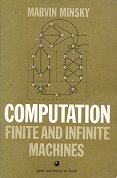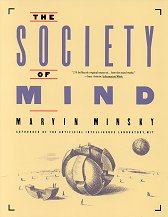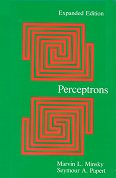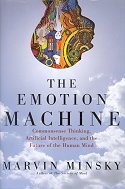Our minds are working all the time,
but we rarely stop to think about how they work.
The human mind has many different ways to think, says Marvin Minsky,
the leading figure in artificial intelligence and computer science.
We use these different ways of thinking in different circumstances,
and some of them we don’t even associate with thinking.
For example, emotions, intuitions, and feelings are just
other forms of thinking, according to Minsky.
In his groundbreaking new work, The Emotion Machine,
Minsky shows why we should expand our ideas about thinking
and how thinking itself might change in the future.
The Emotion Machine explains how our minds work,
how they progress from simple kinds of thought to more complex forms
that enable us to reflect on ourselves—what
most people refer to as consciousness, or self-awareness.
Unlike other broad theories of the mind, this book proceeds in a step-by-step fashion
that draws on detailed and specific examples.
It shows that thinking—even higher-level thinking—can be broken down
into a series of specific actions.
From emotional states to goals and attachments
and on to consciousness and awareness of self,
we can understand the process of thinking in all its intricacy.
And once we understand thinking,
we can build machines—artificial intelligences—that
can assist with our thinking, machines that can follow the same thinking patterns
that we follow and that can think as we do.
These humanlike thinking machines would also be emotion machines—just as we are.
This is a brilliant book that challenges many ideas about thinking and the mind.
It is as insightful and provocative as it is original,
the fruit of a lifetime spent thinking about thinking.
This is a direct sequel to The Society of Mind,
with some more details and explanations worked out, and the same style
of diagrams. This time we get a discursive wander around possible
structures of various cognitive processes, with various interjections
from a range of critics.
Despite the title, there is actually very little on emotions as
such. Minsky has an interesting take on them: he regards them as being
a consequence of thinking, not as a causal factor in
the process:
pp226. [Patient Elliot’s
inability to decide, and emotionlessness]
led Damasio to suggest that "reduced
emotion and feeling might play a role in Elliot’s decision-making
failures." However, I’m inclined to turn that around to suggest
that it was Elliot’s new inability to make such decisions that
reduced his range of emotions and feelings.
pp233-4.
The expressions of rage ... could have
served in primordial times to help to repel or intimidate the person
or creature that one is angry with; indeed, any external expression of
one’s mental state can affect how someone else will think. This
suggests an idea about what we mean when we use our most common
emotion-words; they refer to classes of mental conditions that
produce external signs that make our behaviors more predictable to the
persons with whom we are dealing. Thus, for our ancestors, those
bodily signs served as useful ways to communicate such so-called "primary"
emotions as Anger, Fear, Sadness, Disgust, Surprise, Curiosity, and
Joy.
...
The body and face could also serve as a simple sort of memory ...
your external expressions of anger may serve not only to frighten your
enemies, but to also ensure that you will stay frightened for long
enough to carry out some actions that might save your life.
If emotions are to be thought of as a consequence of cognition, I
wonder how this fits with animal emotions? Minsky says only a
little about evolutionary development, but his architecture does admit
increasing levels and layers of sophistication in the processing
(which is one of the regions where it is more developed than in The
Society of Mind). Maybe Minsky would say that animals have
much simpler cognitive systems, but that their emotions are
nevertheless consequences of these simpler systems?
Despite not doing exactly what it says on the tin, however, this is
a fascinating read. There seems to be more structure in the underlying
model this time around, not just a pandemonium of agents competing to
be heard over the din. Some questions are still begged: how do
certain of the Recognisers manage to do their jobs? But it certainly
feels like a not implausible model of what’s going on inside our
heads.



